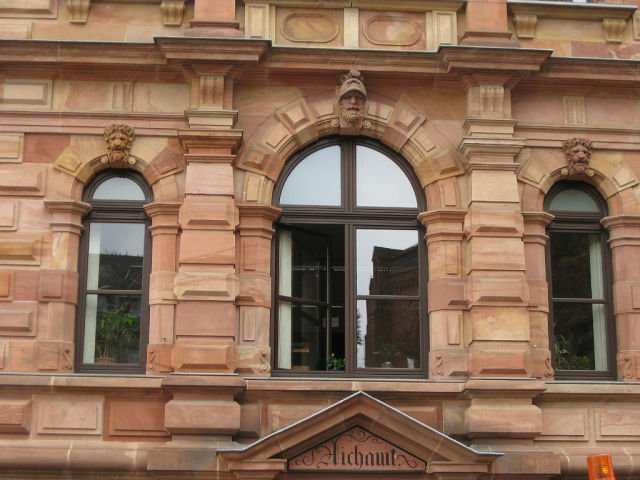#658. Neo-Renaissance Facade with Alchemical Motifs
The photograph shows a fragment of a historical building facade executed in Neo-Renaissance style. The facade is clad with sandstone of a light pink or terracotta hue, which gives the building a warm, noble appearance. The architectural composition demonstrates the rhythmicity and symmetry characteristic of this style.
A large semicircular window with an arched top framed by rusticated pilasters occupies the central place in the composition. Two smaller windows with arched tops are located on either side. Particularly noteworthy are the decorative elements - mascarons in the form of heads placed above the side windows and at the top of the central arch, which is a typical element of Renaissance architecture.
The facade has a pronounced relief thanks to the rustication, cornices, and protruding architectural details that create a rich play of light and shadow. Below the central window, there's a small triangular pediment with the inscription "Alchymia," which may indicate the historical purpose of the building or part of it, possibly related to a pharmacy or laboratory.
The window frames are done in a dark color, creating a contrast with the sandstone facade and emphasizing the architectural rhythm of the building. Overall, this fragment of the facade demonstrates the high quality of architectural decoration and the mastery of stonework characteristic of historical European architecture.
